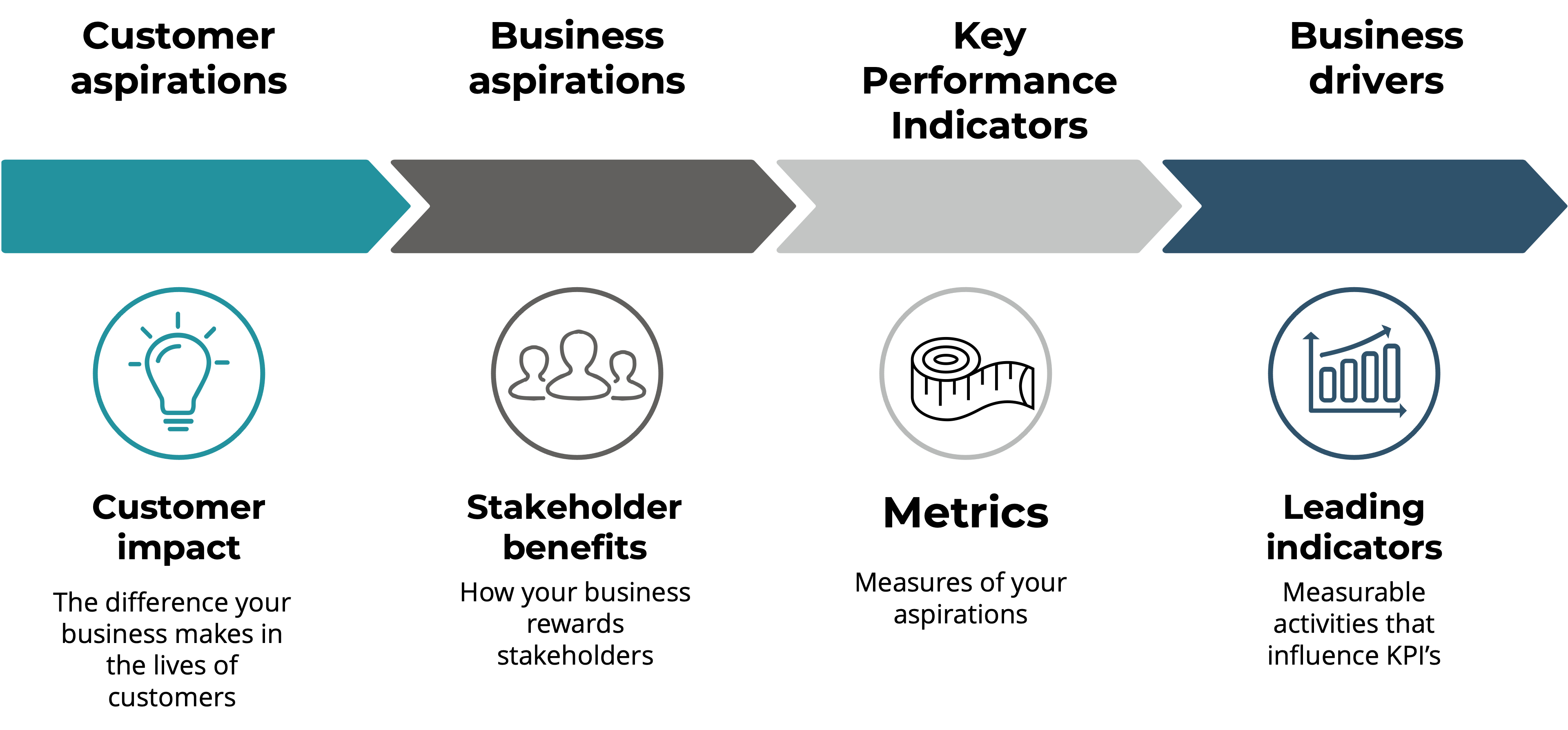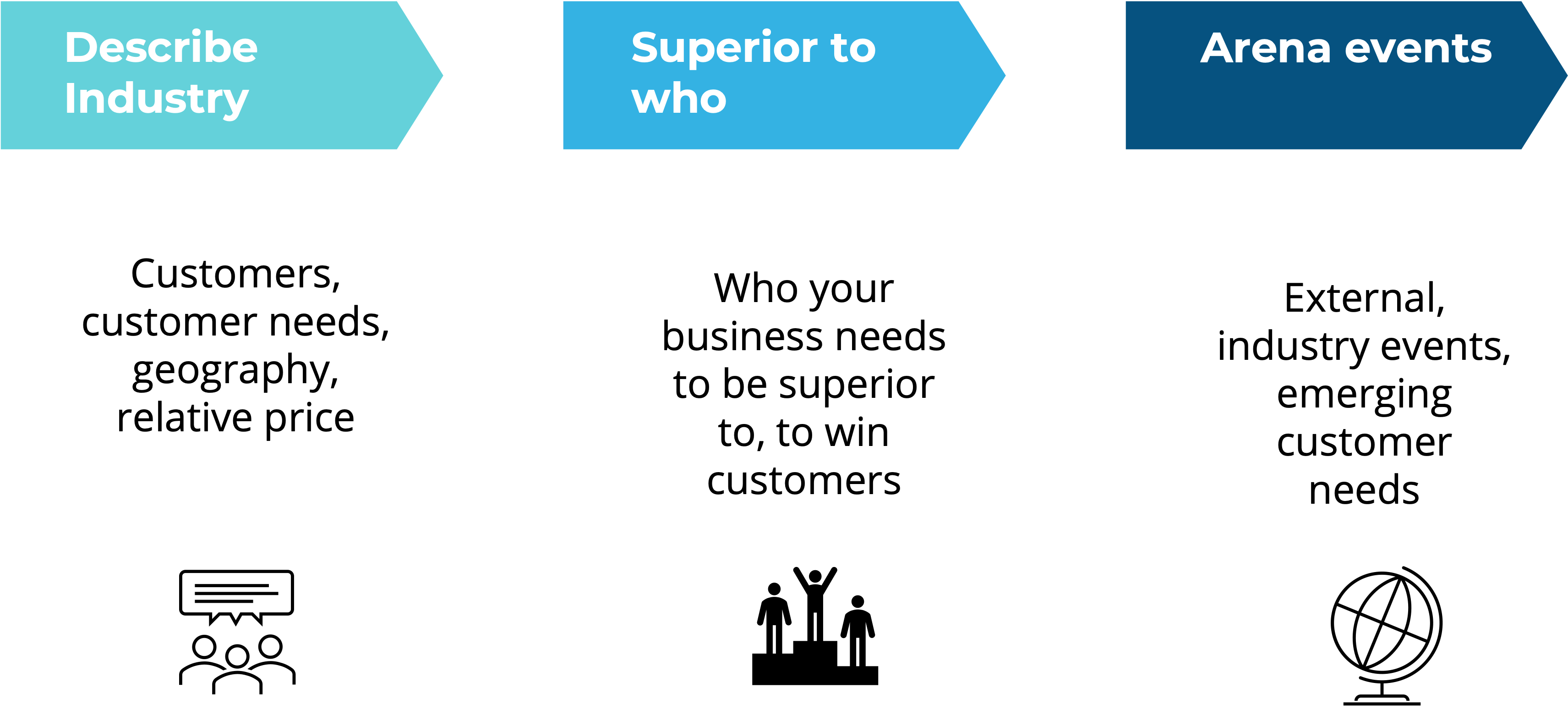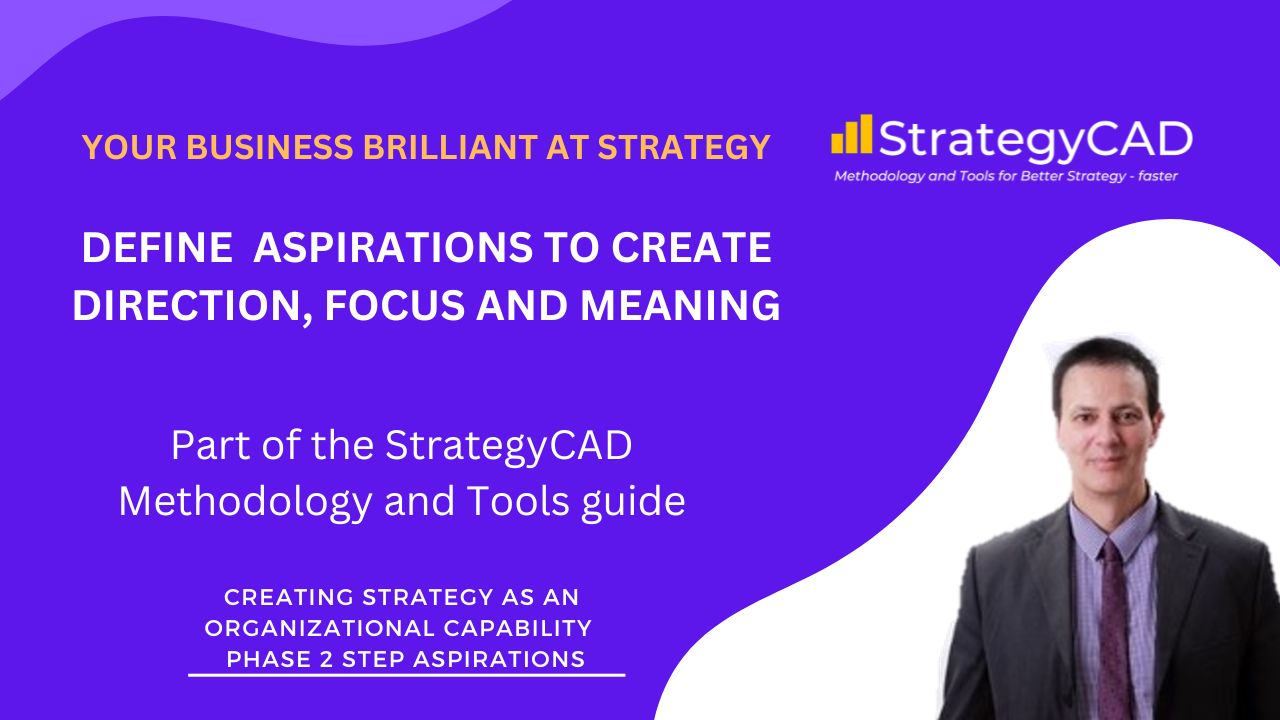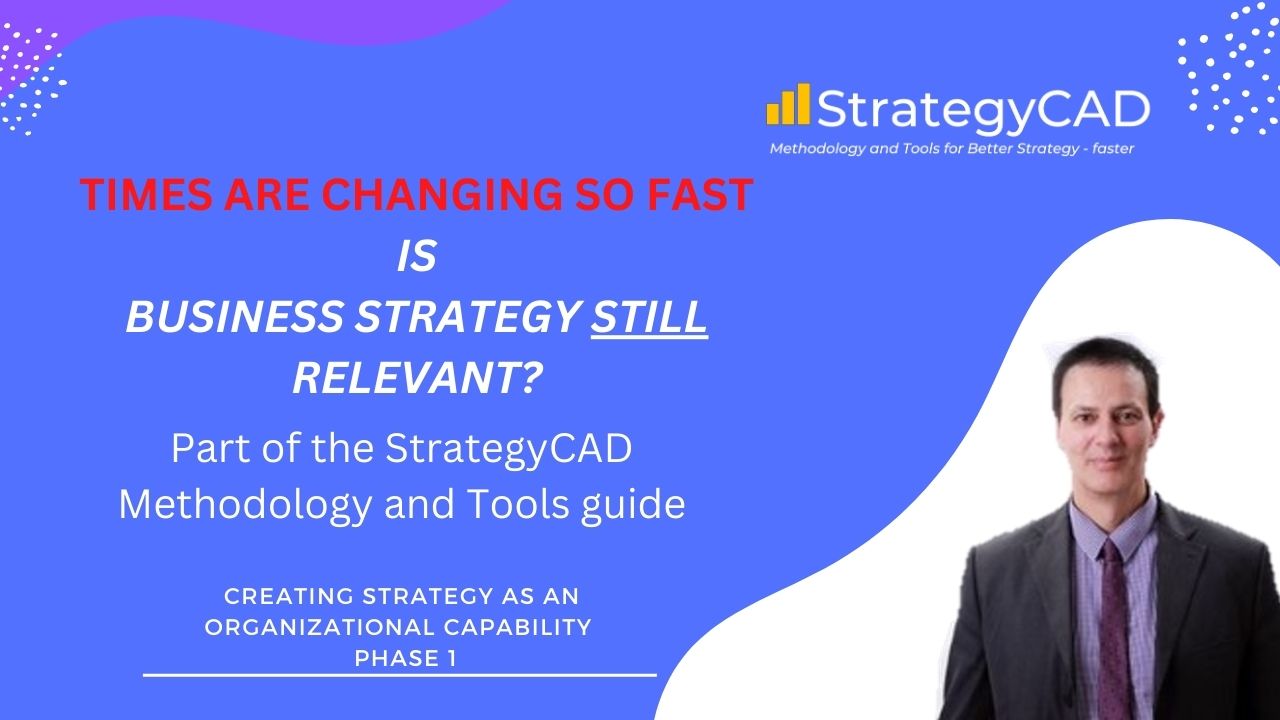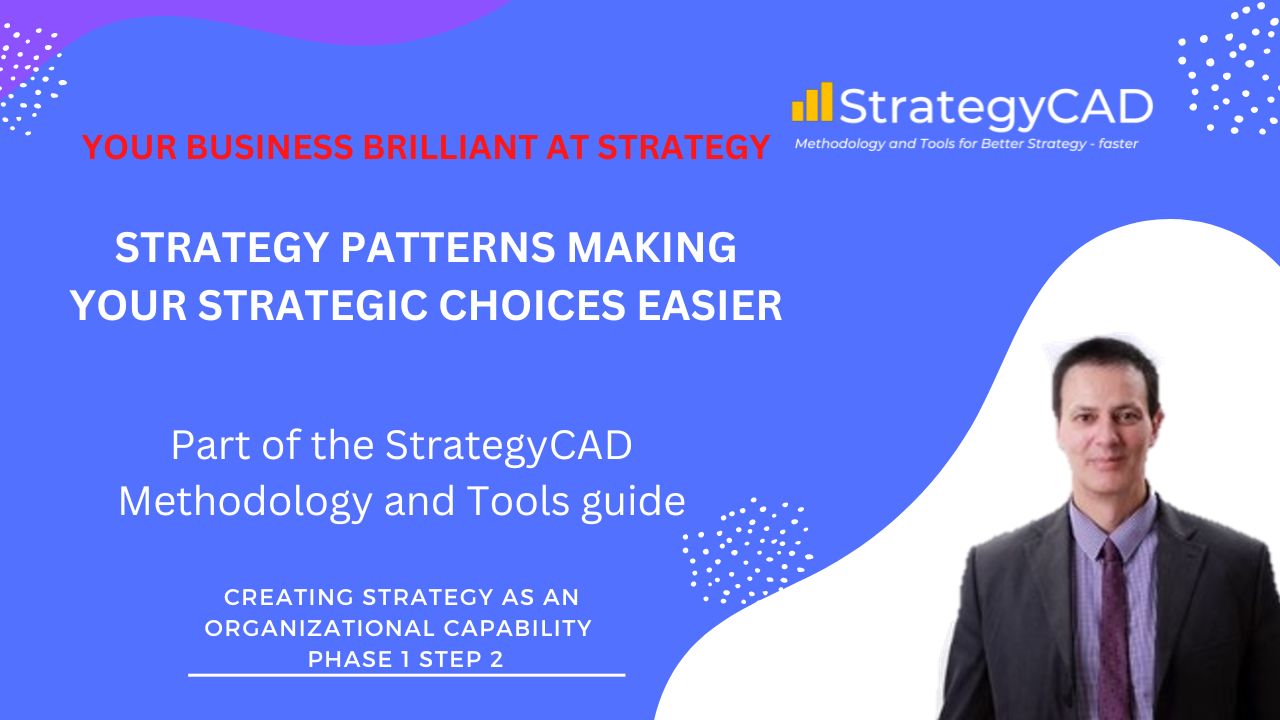High performance is achieved in response to high performance choices. Your strategy is about making those high performance choices. It is about picking the most fertile fields where the value your business can provide the most impact and encounter the biggest demand. It is about ensuring you have the choices in place to enable superior value and succes in those fields. Finally, it is about then transitioning to an action / implementation plan that brings those choices to reality.
In this section you can use the StrategyCAD™ integrated choices model to make your strategic choices. The StrategyCAD™ choices model integrates the recognized strategic choices models with a choices implementation model based upon Professor Richard Rumelt's Strategy Kernel. In this way StrategyCAD™ aims to bring formulation (design) and implementation (build / execution) into a singular unified method or process.
Leveling the playing field for leadership teams
Too often leadership teams who are denied access to the tools
and methods to make a mutually supportive set of
choices - do not make them, and then struggle against and
lament poor execution.
An incomplete set of strategic choices
leaves your business with potential
ambiguities and misalignment.
Incomplete choices contribute to the
substantial rate of startup, business failure or under-performance.
Indeed, the #1 cause of business failure is an incomplete
or ill-considered strategy.
One of the motivations of the StrategyCAD team is to enable a substantially higher rate of startup success and increase the frequency of entrepreneurial success.
In the StrategyCAD™ platform Strategic choices are made visible and demonstrably supportive of each other in the Strategic choices canvas .
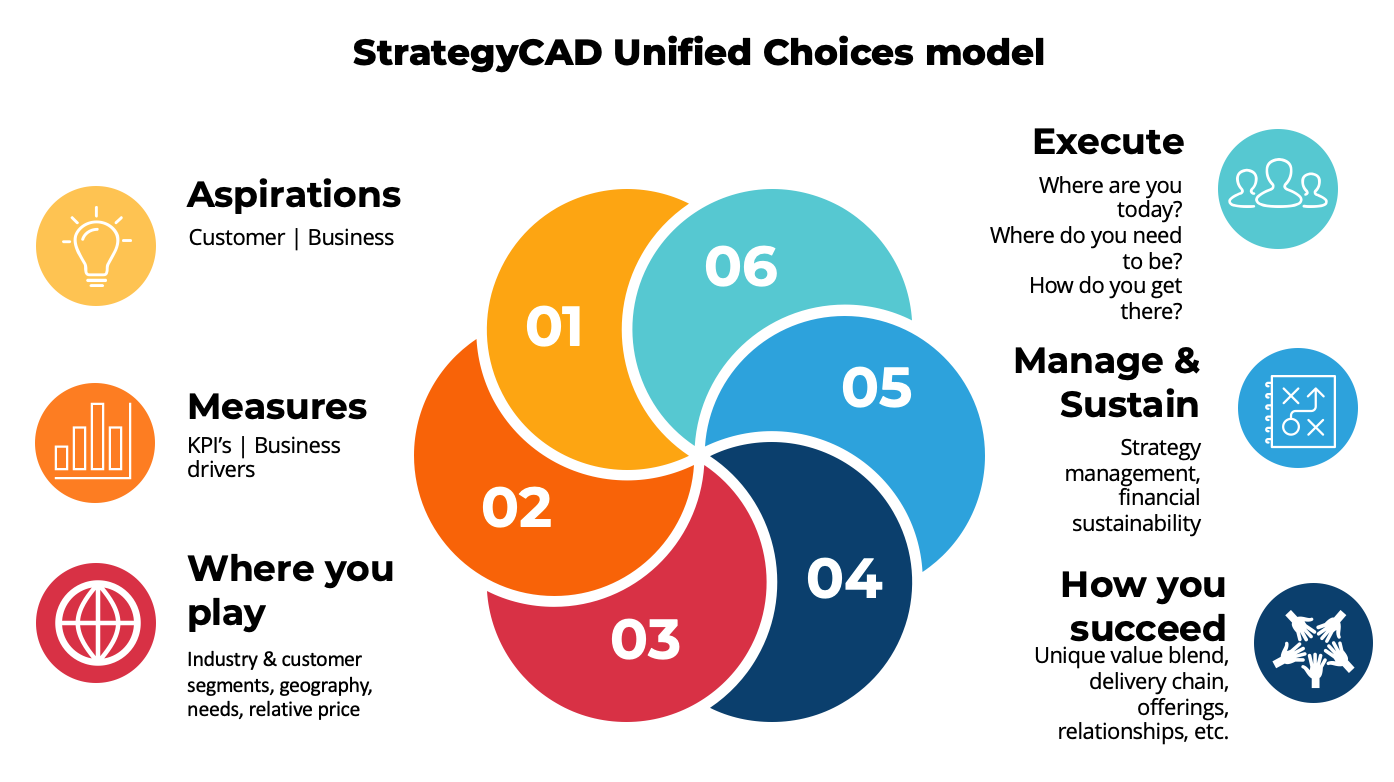
You can work your way through the Strategic choices canvas to make your strategic choices with a focus on elevating performance, by focussing on the where to play choice that offers the most opportunities along with an approach or at least theory on what gives your business the greatest probability of success - which you can continously evolve.
Strategic choices methodology guidance trail
You can work your way through the topics in the canvas below. See the Using the StrategyCAD Strategic Choice canvas for suggestions to design a better strategy - faster.
Methodology
Using the StrategyCAD™ Strategic Choices canvas
How to create a better strategy - faster?
As a guideline, it is recommended you work from top of the canvas to bottom. Within each layer or choice you can work right to left or left to right. In some cases it will be intuitive and useful for you to fill in some lower sections of the canvas based on your existing insights and experience. Whichever order you work, the most significant outcomes are to ensure
- Your business aspiration clarifies the type of Strategy to be applied - cost leadership, operational efficiency, differentiation - product leadership, or customer centricity.
- You have a definition / description for each StrategyCAD™ Strategic choices Canvas component.
- Within a layer each choice is supportive of the other choices in that layer
- The sum of the choices in a layer are supportive of and consistent with the layer(s) above.
Iterate to ensure completeness and consistency
Choices will be made and updated iteratively. That is, as you and your team make a choice, or a set of choices you will then need to validate it supports the other choices, particularly those above it. For example, if in the How we succeed choice it becomes apparent the Where to play choice is too diverse, narrow or not a good match for your how to succeed choice then you will need to adjust to ensure mutual consistency of choices.
The canvas below is a replica of the StrategyCAD™ Strategic choices canvas structure. Functionality is missing, but the structure and intents are present.
|
Here you can optionally provide an overview that links the story of your customer, business aspirations, drivers and KPI's |
|||

Business aspiration(s)What business success looks like
Define your business aspirations 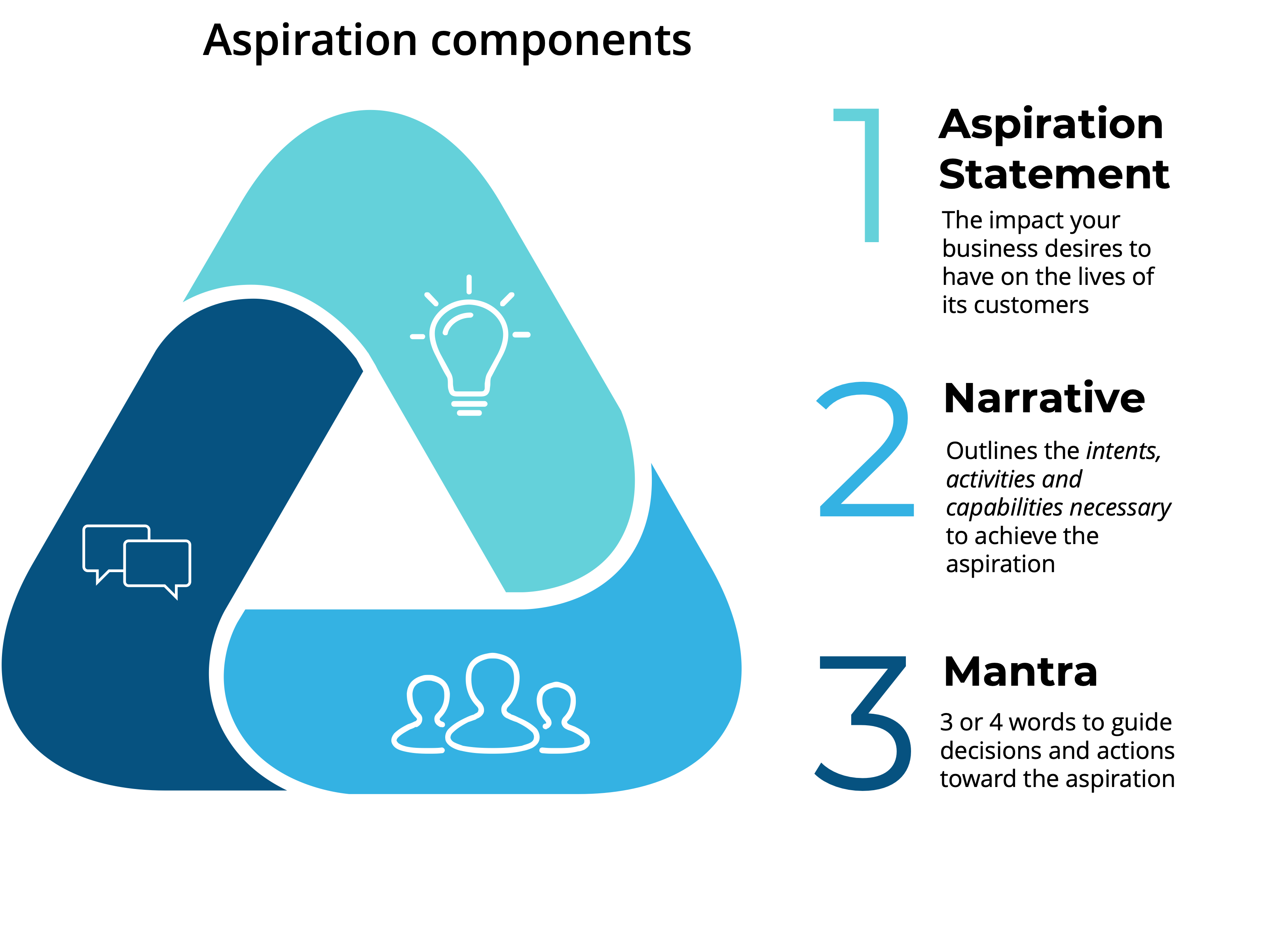
|
Customer aspiration(s)Impact on our customers lives Clarify the problem(s) your business solves, addressing what needs, for who to deliver what benefits and delight. 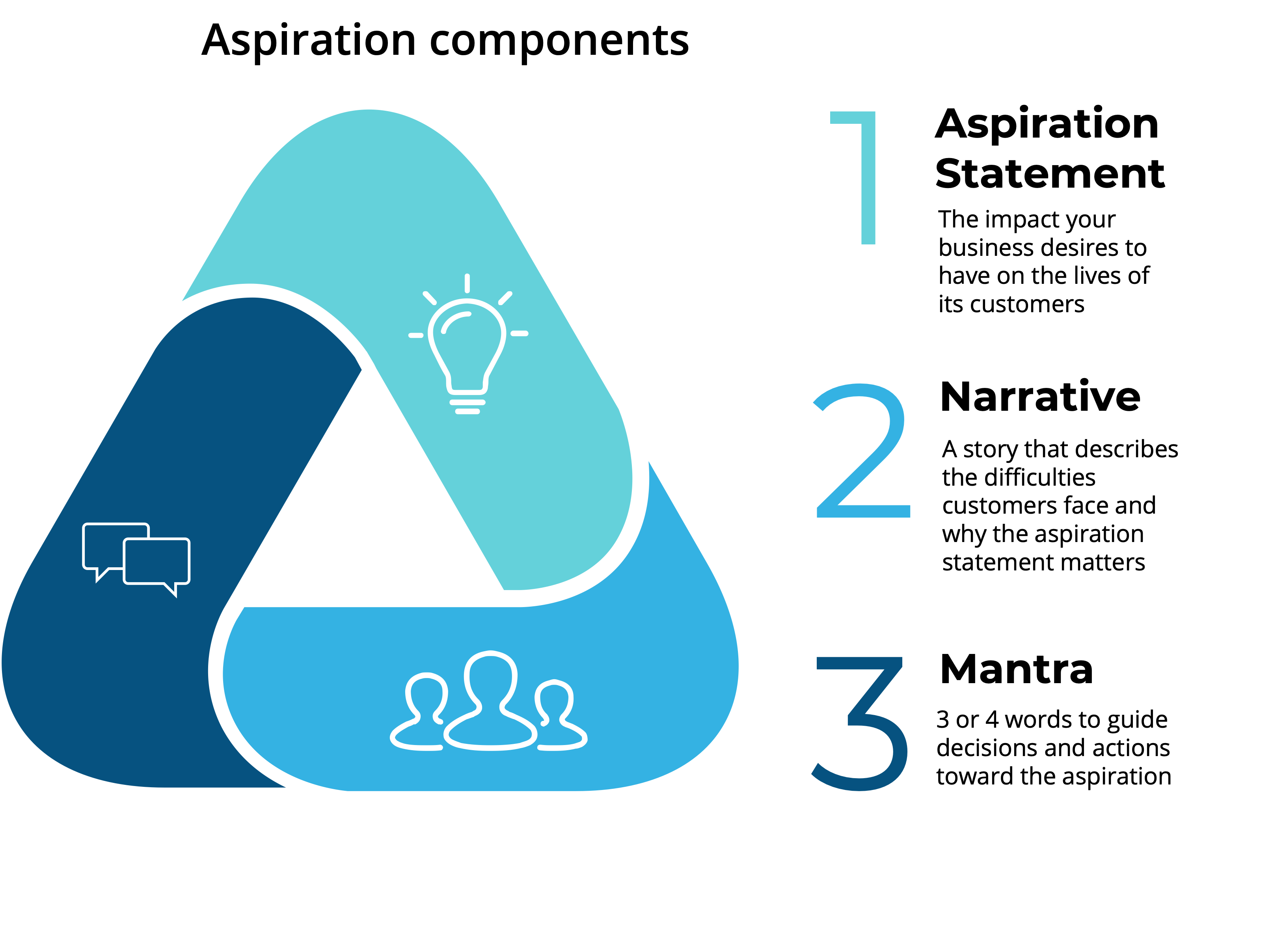
|
||

Business driversLeading indicators of performance Measures activities your business controls - correlated with achieving KPI's. For example, if customer satisfaction is a KPI and responding to customer enquiries within 1 business day increases satisfaction, a viable business driver could be the percentage of customer enquiries responded to within one business day. You could set a target for that driver (e.g. 80%) based upon its influence on the KPI and the resource demand necessary to achieve it. 
|

KPI'sTrailing indicators of performance Based upon your customer and business aspirations, record, at least a candidate set of Key Performance Indicators to keep score of how your business is doing and its performance trend. Getting the right set of KPI's may require some adjustment or additions as you go through the Strategic choices canvas 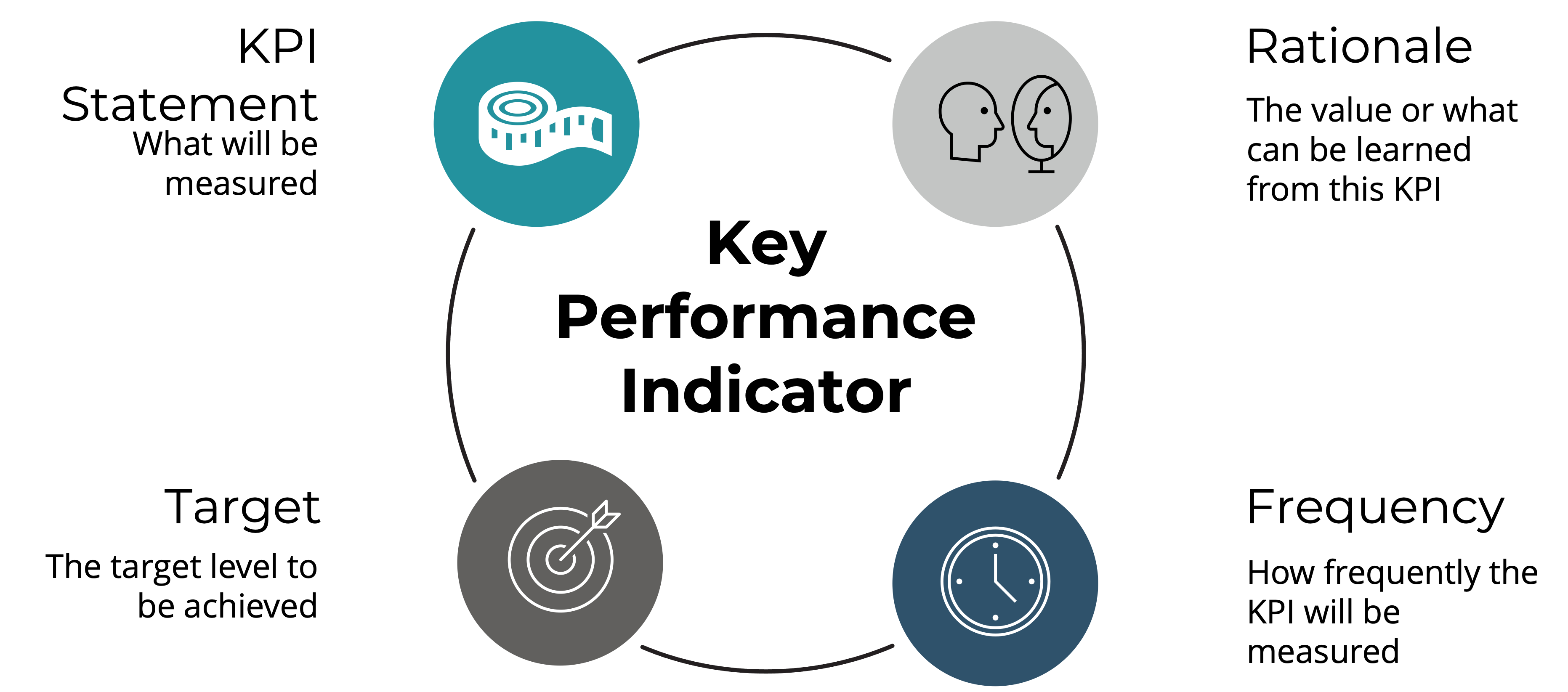
|
||
|
Here you provide an overview of your where to play choice and what is believed to be true that makes these or this a good choice. |
|||

Industry arenasIndustry, industry segments and locations 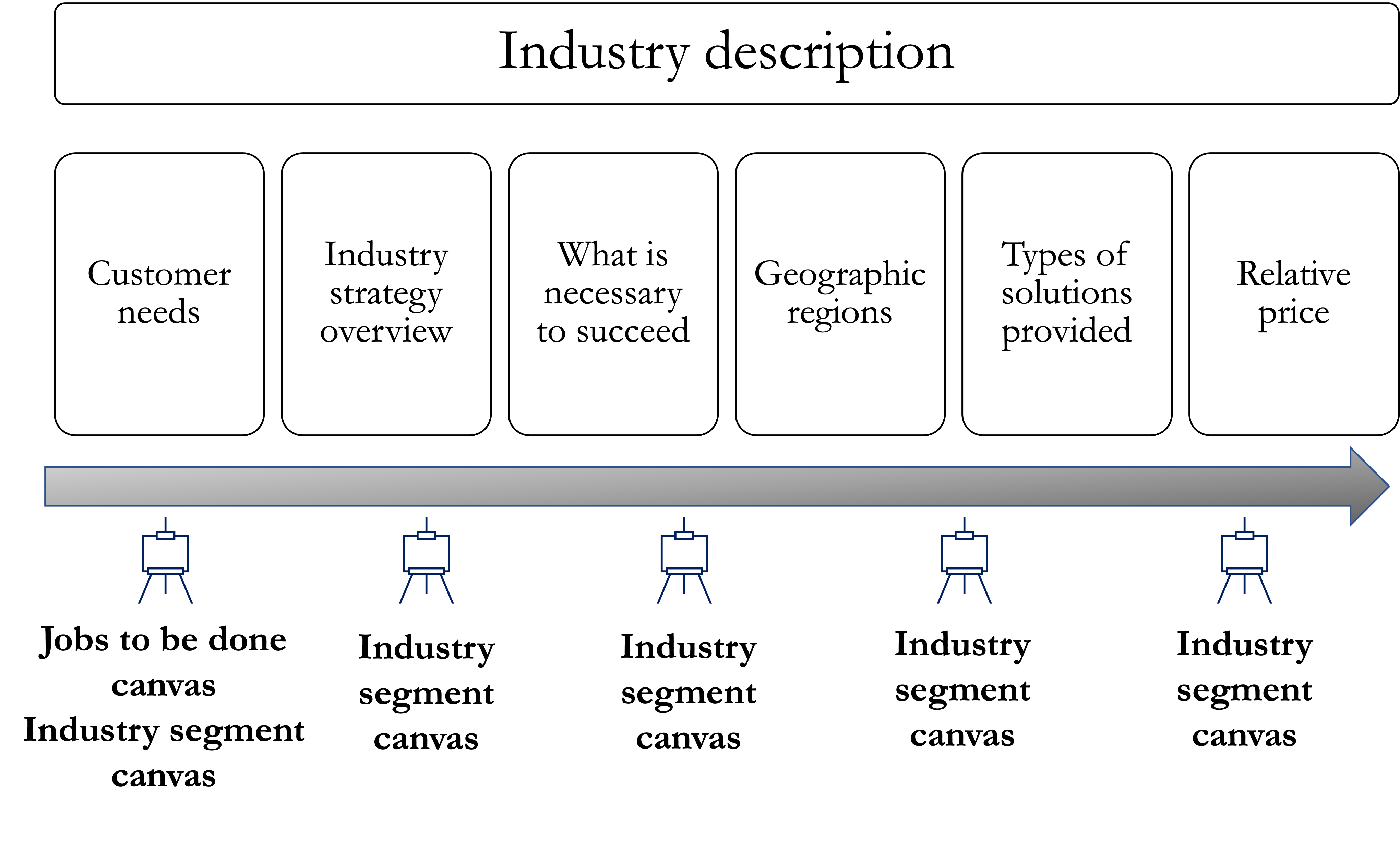
The industry description is an assessment of an industry segment and a decision about its fit for your business. It uses the industry segment canvas to define the elements in the diagram above to inform your decision. |

OpportunitiesExternal situations you can leverage for advantage Following the description of your industry. You can use the Industry segment canvas to do any of the external, industry or demand and supply assessments on the industry segment. Following those assessments you will identify opportunities for your existing value proposition or enhancements to it. You can elaborate opportunities using the opportunity canvas. Include opportunities to be addressed in your strategy here. |

Which customersMarket segments of focus
Your business is likely willing to serve many, but it best
serves a specific subset of its industry. Here you can
create and describe
those segments. |

Which needs - Problems we solveJobs we enable customers to do Customers' hire products and services to improve their situations, or resolve their needs. Use this section of the canvas to identify those Jobs. Once you have those in scope of your business use the Jobs to be Done canvas to elaborate those jobs and identify the needs, trigger events and delighters of those jobs. |

ThreatsSituations threatening performance / viability Following the description of your industry. You can use the Industry segment canvas to do any of the external, industry or demand and supply assessments on the industry segment. Following those assessments you will identify potential threats to your value proposition. You can elaborate threats using the threat canvas. You can record threats to be addressed in your strategy here. |

Relative priceRelative price dimension of the market we play |
||

How we succeedWhat unique value do we bring and how we generate competitive advantage. Here you provide an overview of your How to succeed choice and what is believed to be true that will allow success or victory. |
|||

Integrated value chainDefine your integrated and sequenced steps to effectively deliver your superior customer value.
Use Porter's
value chain to
how your value
proposition(s) are delivered.
|

Competencies (Strengths)What is done or must be done well to succeed Competencies represent the differential expertise or "know-how" used or required by your business to deliver its value. Competencies are often built up over time and can be extremely difficult to replicate or expensive to purchase, hence a source business advantage and value. You can identify candidate competencies from your generic strategy patterns and reviewing your value chain. You can use the competency canvas to describe and nurture competencies. Identify and create strengths necessary to enable your effective delivery system |

Unique value blendAttributes of the value proposition that makes target customer experience delightful A Value driver is an attribute of your value proposition that makes the customer experience delightful. Moreover, it is an attribute that customers can consistently rely on or expect from your value proposition. Example value drivers include: Price / cost, Convenience, Performance, Brand image, Appearance / style / aesthetics Speed of service / delivery, Friendliness, attitude, helpfulness, authenticity of service, Diversity of range and many others. StrategyCAD canvas includes many other recommendations. A value driver blend is the mix of value drivers that create delight for your target customers e.g. Cost, convenience, quality or brand image, ease of use, and durability |
|

WeaknessesActivities when improved better enable aspirations Weaknesses are competencies or resource gaps that place your business at a disdvantage in fulfilling your aspirations or winning with your target customers. You can record your weaknesses in the canvas and nurture them into strengths or find ways to work around or invert them (use them to your favor). |

OfferingsTypes of products / services offered to meet customer needs Offerings to deliver superior value are added here. You can use the Offering canvas to identify the purpose, success criteria, relative price, customer motivations related to the offering or type, along with other details to clarify the offering of type of offering. |

ChannelsChannel to promote, distribute, sell, or support value proposition Channels are how your business uses to interact with the external environment. Customer channels support promotion, sales, delivery, support of, and potentially return of your offerings. Identifying channelsYour consumption chain, integrated value delivery chain and relationships can help identify channels. Channel canvasYou can use the Channel canvas to further define the purpose, success criteria and resources to effectively operate the channel. |
|

PartnershipsAlliance(s) to create new value propositions, reduce time, cost, or risk or increase quality in existing value propositions A partnership or strategic alliance is a cooperative arrangement in which two or more businesses combine their resources and capabilities to create new value. |

ResourcesTangible and intangible inputs to value delivery Identify and manage the tangible and intangible resources to enable your value chain. |

RelationshipsManaging interactions to deliver value to previous, current, and potential customers. Customers in some / all of your segments may have expectations about the type of relationship they want to establish or sustain with your business. The type of relationships available may influence the customers' willingness to buy / pay. As a business leader, it can be valuable to find a way to support the objectives the customer has related to those expectations in way that is cost-effective and valuable to both the customer and the business. You can further define the relationship purpose, objectives and resource requirements using the relationship canvas. |
|

SustainBusiness and Strategy sustainability |
|||

Strategy managementPolicies and procedures to ensure the strategy is being regularly reviewed, measured, susained and adjusted in response to performance or changes in the external environment. It is important to ensure that the data and procedures to measure KPIs, business drivers and other strategy performance measures are available and those jobs get done. It is valuable to regularly review strategic questions. These questions include:
Strategy reviews can result in updates to the Strategic choices or related canvas. Strategy reviews can recorded in the related Strategic choices journal entry to create a permanent record of the review. |

Value chain costsIdentify and optimise costs Build an understanding of fixed and variable costs in your value chain, plan for ongoing cost-effectiveness Use the costs canvas to describe and better understand your costs and how they fit (or not) into delivery of value. |

Revenue modelsModel generating financial income Add your revenue models used to capture the value from your value proposition. In many cases, your value proposition may have an existing revenue model. You can review these models to investigate whether there are alternatives or additional models that could improve revenue and augment your value proposition. |
|

Strategic choices canvas is licensed under a Creative
Commons Attribution-NonCommercial 4.0 International License.
Attribution — You must give appropriate credit, provide a link to the license,
and indicate if changes were made.
You may do so in any reasonable manner,
but not in any way that suggests the licensor endorses you or your use.
NonCommercial — You may not use the material for commercial purposes.
No additional restrictions
— You may not apply legal terms or technological measures that
legally restrict others from doing anything the license permits.
